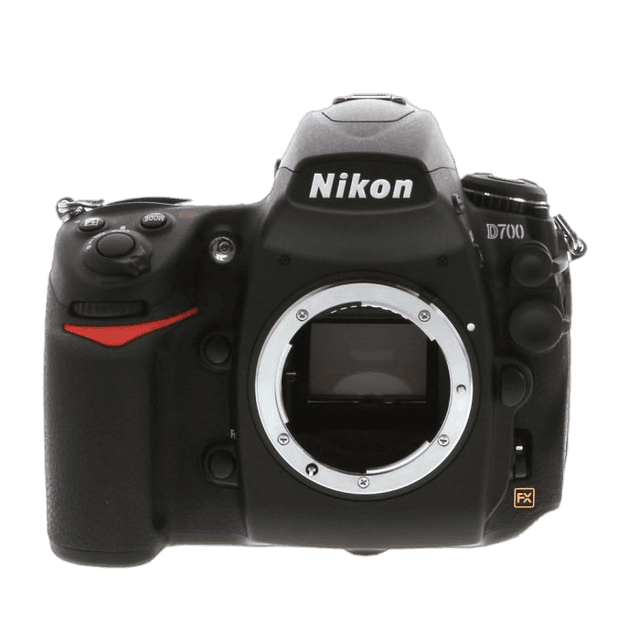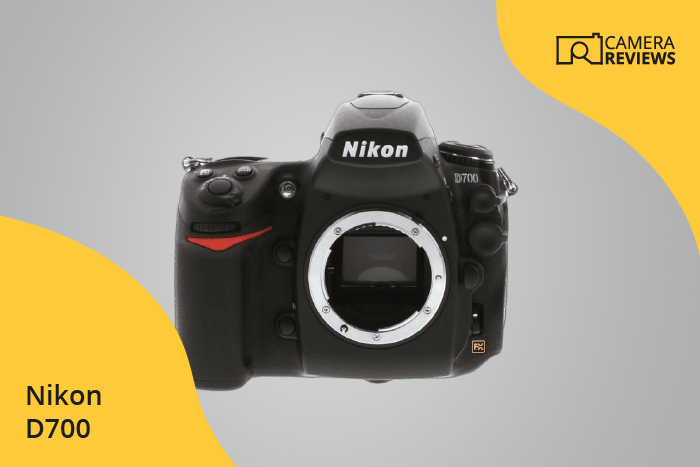Nikon D700 Specs and Scores

The Nikon D700 scores a 53 out of 100 in our evaluation. Launched in 2008, this DSLR camera has a launch price of $2,699. Measuring 147 x 123 x 77mm and weighing 1074g (2.37lbs), the D700 offers a decent range of specifications for its time. However, considering the advancements in camera technology since its release, the D700 may not meet the expectations of today’s market. Despite its age, this camera still has features that some photographers may appreciate.
Nikon D700 Overview and Optics
The Nikon D700 receives a score of 54/100 for its optics. The camera has 12.1 megapixels, a shooting speed of 8 frames per second, and a CMOS sensor. This sensor, which is full-frame, has a DXOMARK score of 80. The camera also uses an Expeed processor and features a Nikon F FX lens mount. However, it lacks image stabilization and has an aspect ratio of 3:2.
Compared to modern cameras, the D700’s optics may seem outdated. The 12.1-megapixel resolution is lower than many current models, and the absence of image stabilization can make capturing sharp images more challenging. However, the full-frame sensor and Expeed processor still provide good image quality.
The Nikon D700’s optics may not be the most advanced, but they can still produce quality images. The camera’s full-frame sensor and Expeed processor remain valuable features, despite the lower megapixel count and lack of image stabilization.
Nikon D700 Video Performance
One might expect a camera like the Nikon D700 to have video capabilities, but it does not. However, it compensates with built-in time-lapse functionality.
Nikon D700 Features and Benefits
The Nikon D700 features a score of 54 out of 100. With a 3-inch screen, it offers a resolution of 922,000 dots. However, this camera does not have a touchscreen, flip screen, GPS, or Bluetooth capabilities. It does include WIFI functionality, allowing for easy sharing and transferring of photos.
In today’s market, the lack of a touchscreen and flip screen may hinder the Nikon D700’s appeal. These features have become standard in many modern cameras, providing increased convenience and versatility for users. Additionally, the absence of GPS and Bluetooth limits the camera’s connectivity options.
Despite these shortcomings, the Nikon D700’s WIFI capabilities provide a valuable feature for sharing and transferring photos. While the camera may not offer all the latest features, it remains a reliable option for those prioritizing simplicity and functionality.
Nikon D700 Storage and Battery
The Nikon D700 scores a 43/100 in storage and battery. With only one memory card slot, it accepts Compact Flash (Type I) cards. This storage option is less versatile compared to current cameras that offer multiple card slots and support for SD or XQD cards. The D700 falls short in today’s market in terms of storage flexibility.
The battery life of the D700 reaches up to 1000 shots, powered by an EN-EL3e battery. While this battery life is decent, it does not have USB charging capabilities, which limits its convenience for on-the-go users.
Considering the storage and battery specifications, the Nikon D700 shows its age and lacks some modern conveniences. However, the camera still performs well for photography enthusiasts who prioritize other features and can adapt to these limitations.
Nikon D700 Alternatives
Do you want to know how the Nikon D700 compares to its competitors? Have a look at the most popular comparisons for this camera below:
- Nikon D700 vs D7200
- Nikon D700 vs D7000
- Nikon D5300 vs D700
- Nikon D300 vs D700
- Nikon D600 vs D700
- Nikon D3200 vs D700
Nikon D700 FAQ
Does the Nikon D700 Have Built-in Image Stabilization?
No, the Nikon D700 does not have built-in image stabilization. However, it can still provide stable shots by using lenses with Vibration Reduction (VR) technology.
Does the Nikon D700 Support 4K Video Recording?
The Nikon D700 does not support 4K video recording, as it lacks video functionality altogether. It is primarily designed for high-quality still photography.
What Size Sensor Does The Nikon D700 Have?
The Nikon D700 has a full-frame sensor, providing excellent image quality and low-light performance. The sensor size is 35.9 x 24 mm, which is larger than APS-C sensors.
Does the Nikon D700 Have a Dual Memory Card Slot?
No, the Nikon D700 does not have a dual memory card slot. It features a single CompactFlash (CF) card slot for storage.
Does the Nikon D700 Have a Touch Screen?
No, the Nikon D700 does not have a touch screen. It features a 3-inch LCD screen with 920k-dot resolution for image review and menu navigation.
Does the Nikon D700 Have Wi-Fi and Bluetooth?
The Nikon D700 has Wi-Fi capabilities, allowing for wireless image transfer and remote control. However, it does not have built-in Bluetooth functionality.
Does the Nikon D700 Have GPS?
No, the Nikon D700 does not have built-in GPS. However, it can be connected to an external GPS unit via an accessory terminal.
Is the Nikon D700 Weather Sealed?
Yes, the Nikon D700 is weather sealed, featuring a magnesium alloy body with dust and moisture protection. This makes it suitable for use in various environments and conditions.
Does the Nikon D700 Have a Built-in Flash?
Yes, the Nikon D700 has a built-in pop-up flash, which is useful for fill flash and low-light situations. It also supports Nikon’s Creative Lighting System for advanced flash control.

